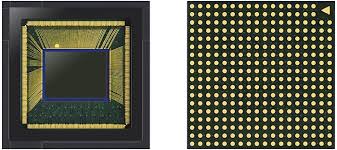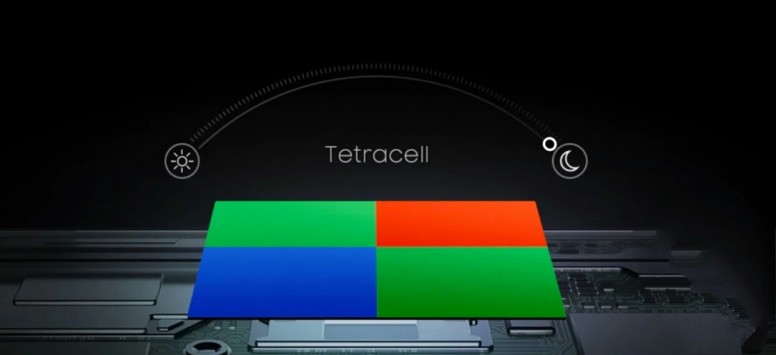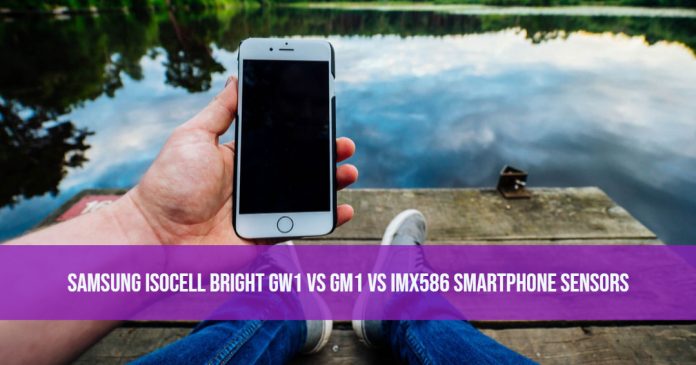In this article, we are comparing the Samsung ISOCELL Bright GW1 vs GM1 vs IMX586. Read along to know more.
Also Read: Phones with IMX586
The cameras on smartphones have become one of the core focus for huge advancements over the years. Gone are the days when we were happy with a camera that offered a single 2 MP camera on its rear. The camera technology has gone so advanced that they now have been on the verge of replacing the DSLR cameras, no puns intended. The high-end cameras these days come with capacities and resolutions as high as 48 MP sensors on mid-range phones. The Xiaomi’s Redmi Note 7 Pro is a clear case in point.
Also Read: Phones with Samsung GW1
Now, Samsung has brought in extensive evolution in the form of the highest resolution for a mobile camera. Yes, we are talking about the ISOCELL Image sensor from Samsung that offers you a resolution of 64 MP. The new Samsung ISOCELL Bright GW1 is a case in point. We will compare the new sensor with the existing 48 MP sensors currently available. From Samsung and Sony’s lineup, we examine the Samsung Isocell GM1 and Sony IMX 586 in today’s post.
Samsung ISOCELL GM1 – What does it offer you?

Like most you may have already been aware of, the ISOCELL GM1 from Samsung offers you an excellent smallest pixel size of just 0.8 microns. While this can go a long way in enhancing the image quality of your smartphone camera, it can also be helpful enough in reducing the overall size of the camera module to a considerable extent.
The resolution available on the sensor, as we have already mentioned, is 48 MP. However, it should be noted that this 48 MP resolution is not the native one. In other words, Samsung GM1 does not offer an actual 48 MP resolution. It is essentially a 12 MP count and the 48 MP resolution you would be getting on the sensor is through interpolation.
The new sensor makes use of modern technology from Samsung called ISOCELL Plus. The technology makes use of the pixel isolation concept, which can be helpful in optimization of the smaller sized pixels. This technology can be quite useful in arriving at the best option for enhanced performance on the high-resolution cameras on the high-end cameras being launched recently. The module makes use of AI technology to output the 48 MP image quality.
The camera module is made available on the Samsung Galaxy S10 and S10+ devices. It is also made available on the Redmi Note 7. The modules have already gone into production from the final quarter of 2018.
The Sony IMX586 – An Overview

Until the launch of Samsung ISOCELL GW1, the fierce competition that the Samsung GM1 ever faced was in the form of Sony IMX586. The fierce competitor to the Samsung offering, the Sony IMX586 also offers you the same functionality as the Samsung offering. Yes, we are talking about the resolution of 48 MP.
The camera module on the Sony IMX586 is the same 0.8 microns as on the Samsung GM1. The module was launched in the later quarters of 2018. You can find the sensor offering you a high-quality image.
You will also have an excellent performance with its digital zoom. It provides you a Quad Bayer 2 x 2 array of pixels.
By combining pixels, it offers excellent performance both in low light as well as in artificial lighting conditions. The pixel binning tech provides you with access to the perfect bright light outputs. The feature also aids in excellent video shooting performance in low light.
The sensor also offers you an excellent performance of 48 MP performance in broader daylight by capturing a significant amount of data. The superb shooting performance will also include access to a perfect 4K recording at 90 fps and also have access to 1080p video resolution at 240 fps.
The Samsung Isocell Bright GW1 – A Sneak Peek
Samsung recently announced the launch of a new camera sensor – the Samsung Isocell Bright GW1. You have access to an option for enhanced mega-zoom performance with the highest smartphone camera resolution at 64 MP ever on a smartphone.

The sensor has the same 0.8 microns sensor size as on the other two options we just discussed. With this launch, along with the 48 MP ISOCELL line up GM2, Samsung has expanded its 0.8 microns sensor range.
Yongin Park, executive vice president of sensor business at Samsung Electronics stated,
“With more pixels and advanced pixel technologies, Samsung ISOCELL Bright GW1 and GM2 will bring a new level of photography to today’s sleekest mobile devices that will enhance and help change the way we record our daily lives.”
The sensor makes use of the Tetracell technology along with the remosaic algorithm. It can shoot a high resolution 16 MP images in the low light environments and can provide you access to 64 MP images at the bright light conditions. Here are some feature highlights below:
- 3D HDR technology
- 0.8um with ISOCELL Plus (1.6um at 16 MegaPixels)
- Excellent Low-light performance with the new Tetracell technology by combining pixels
- Existing SOCs from Qualcomm & MediaTek can already support the GW1 sensor.
In fact, you will have access to an enhanced visual experience because the camera module works in the same way as a human eye perceives the light. The entrance to an improved real-time high dynamic range of up to 100 dB should be capable of developing a better hue performance. It may be worthy to note here that the HDR range that a human eye can handle would be 120 dB and that offered by the normal range of sensors would be 60 dB.
It also comes with a Dual Conversion Gain or DCG for providing you with a better sharpness in your images. A few other advantages offered by the GW1 would include higher efficiency in the autofocus technology, full HD recording capability at a whopping 480 fps and sharper results. The 480 fps shooting should be a perfect option for getting an excellent slow motion video that would resemble a cinematic camera.
Comparison Chart – Samsung ISOCELL Bright GW1 vs GM1 vs IMX586 Smartphone Sensors:
Having gone through the specific features and functions offered by the three competing camera sensors, we thought of comparing them in a side by comparison chart. This should help us understand how the three camera sensor options compete. It can help you go through a better analysis of the sensors. So, here we go!
| Features and Functions | Samsung Isocell GM1
| Sony IMX 586
| Samsung Isocell GW1
|
| Effective Pixels | 48 MP | 48 MP (8000 (H) × 6000 (V)) 4K(4096×2160) @ 90fps
1080p @ 240fps
720p, 480p | |
| Sensor size | 6.4 * 4.8 mm or 1/2″ | 8.0 mm diagonal (1/2-type) | |
| Unit cell size | 0.8 microns | 1.6 microns | 0.8 microns |
| Subpixel layout | RGB | RGB | |
| Model | Isocell Slim | Isocell Bright | |
| Resolution | 48 MP | 64 MP | |
| Optical format | 1/2″(Diagonal 8.0mm) | 1/1.72″ | |
| Interface | MIPI 4 Lane RAW | MIPI 4 Lane RAW | |
| Chroma | Tetracell | Tetracell | |
| Autofocus performance | Phase Detection autofocus | Phase detection autofocus | Super PD |
| Video shooting frame rate | 4K(4096×2160) 90fps 1080p 240fps 720p 480fps(w/crop) |
Comparing the Sony sensor with the Samsung sensor may not be a perfect option under ideal circumstances. However, we have attempted listing out the specific features that the three sensors provide you access to. We would assume the comparison here should ideally meet most of your requirements.
Which among them would you opt for?
Well, rather than you as a consumer would opt for a particular sensor, it is more of a prerogative on the part of the original device manufacturers to take a call. From that perspective, we may not have a choice as such.
However, if you have the habit of checking out the specific camera sensors that the smartphone of your choice is equipped with and a die-hard photographer – a smartphone photographer rather – it may be a good idea to choose between those options.
The Samsung Isocell Bright GW1 is just launched, and we may need to wait until the second half of 2019 before you may find a smartphone featuring the sensor. The sensor offers you a 64 MP functionality when compared to the 48 MP resolution available on both Sony IMX586 and Samsung Isocell GM1. Redmi, Xiaomi’s sub-brand is expected to be the first smartphone to opt for the new sensor.
It may be essential to note that the Samsung GM1 sensor was first used on the Redmi Note 7 (non-pro version). We would also expect Samsung to use it on its in-house smartphones. A most likely option is the Samsung Galaxy A Series. We may also see it on next year’s flagship S series devices. However, it is too early to make any commitment in that respect.
Among Samsung GM1 and Sony IMX 586, Samsung offers you 12 MP effective resolution which is interpolated to 48 MP. On the other hand, the Sony IMX586 would provide you with an actual 48 MP image performance. That would, perhaps, make a Sony IMX586 a better choice if you are looking for a perfect 48 MP performance. However, apart from that one difference, almost all other features and functions on the Sony IMX586 and Samsung Isocell GM1 virtually remain the same for nearly all practical purposes.
There is a high chance that the new Samsung GW1 would offer 16 MP sufficient resolution which is interpolated to 64 MP.
In Conclusion
That was a fair comparison between the three competing smartphone camera sensors. We assume that the comparison featured in this compilation should ideally help you arrive at the best correlation between the three of them.
Check them out and find the best option among the three sensors we just discussed.
More Reading:
- Sony CMOS sensors Exmor IMX363 vs IMX519
- Sony EXMOR IMX586 vs IMX607 Sensor
- Samsung Isocell GM1 vs IMX586
- Sony IMX519 vs. IMX486 vs. IMX386 vs. IMX586 vs. IMX377


